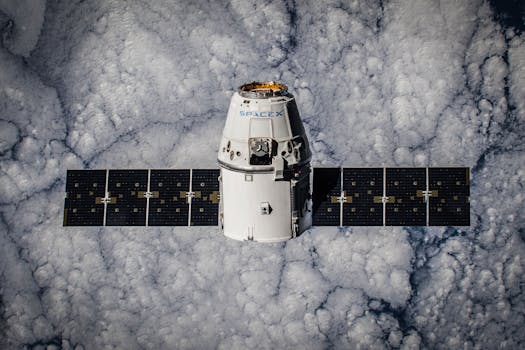
The Future of Satellites: Revolutionizing Global Communication and Exploration. The future of satellites holds immense promise, with advancements in technology and innovation poised to revolutionize global communication and exploration. Satellites have been a crucial part of our daily lives, providing us with navigation, communication, and weather forecasting. However, the next generation of satellites is expected to be even more powerful, efficient, and versatile, enabling new applications and services that will transform the way we live and work.
One of the most significant trends in the future of satellites is the development of small satellites, also known as smallsats. These satellites are smaller, lighter, and less expensive than traditional satellites, making them more accessible to a wider range of organizations and countries. Smallsats are being used for a variety of applications, including Earth observation, communication, and scientific research. They are also being used to provide internet connectivity to remote and underserved communities, helping to bridge the digital divide.
Another important trend in the future of satellites is the use of satellite constellations. A satellite constellation is a group of satellites that work together to provide global coverage and continuous service. Satellite constellations are being used to provide a range of services, including communication, navigation, and Earth observation. They are also being used to study the Earth’s climate, weather patterns, and natural resources. For example, the European Space Agency’s (ESA) Copernicus program is using a constellation of satellites to monitor the Earth’s environment and provide data for applications such as agriculture, forestry, and emergency response.
Advances in Satellite Technology
Advances in satellite technology are driving the development of more powerful, efficient, and versatile satellites. One of the key areas of innovation is in the field of propulsion systems. New propulsion systems, such as electric propulsion and advanced ion engines, are being developed to improve the efficiency and maneuverability of satellites. These systems will enable satellites to stay in orbit for longer periods, reducing the need for costly and complex launches.
Another area of innovation is in the field of satellite communications. New communication technologies, such as high-throughput satellites (HTS) and very high-throughput satellites (VHTS), are being developed to provide faster and more reliable communication services. These technologies will enable the transmission of large amounts of data, including video and other high-bandwidth applications, making them ideal for applications such as remote sensing, telemedicine, and online education.
Future Applications of Satellites
The future of satellites holds immense promise, with a wide range of applications and services expected to be developed in the coming years. One of the most exciting areas of development is in the field of space exploration. Satellites will play a critical role in future space missions, providing navigation, communication, and scientific data for missions to the Moon, Mars, and beyond.
Another area of development is in the field of Earth observation. Satellites will continue to play a critical role in monitoring the Earth’s environment, providing data for applications such as climate change, weather forecasting, and natural resource management. New satellite technologies, such as hyperspectral imaging and synthetic aperture radar, will enable the collection of more detailed and accurate data, helping to inform decision-making and policy development.
Challenges and Opportunities
Despite the many opportunities and advances in satellite technology, there are also challenges that need to be addressed. One of the biggest challenges is the issue of space debris. As the number of satellites in orbit increases, so does the risk of collisions and the accumulation of space debris. This can pose a significant threat to the safety and operation of satellites, as well as to the environment.
Another challenge is the issue of regulation and governance. As the use of satellites becomes more widespread, there is a need for clear and effective regulation and governance to ensure that satellites are used responsibly and sustainably. This includes regulations related to the launch and operation of satellites, as well as the use of satellite data and services.






